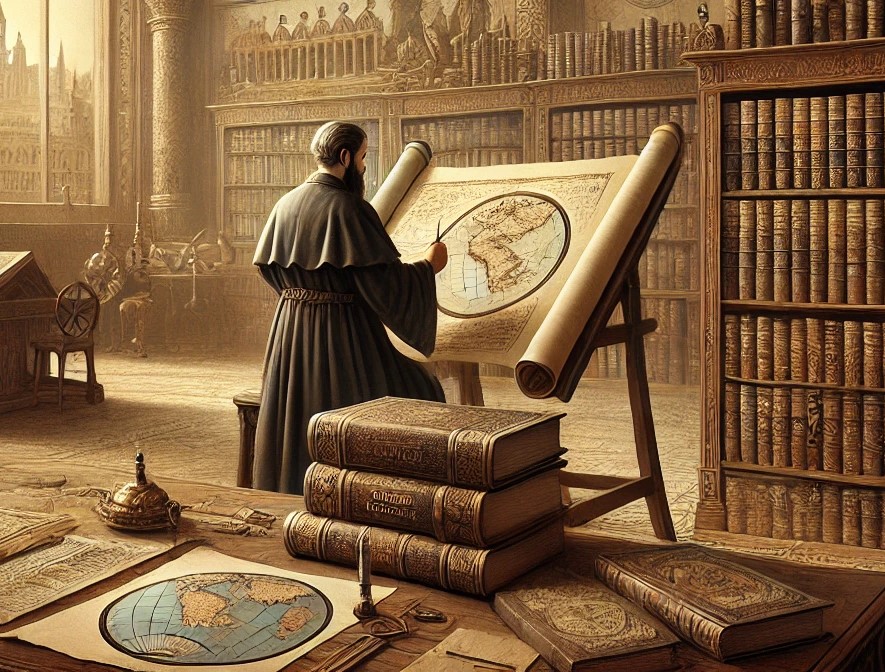History of Empire (sage ability)
History of empire is an amateur-status sage ability in the study of History, offering the character a structured understanding of the political, economic and military forces that drive the formation, expansion and eventual decline of empires. This ability grants insight into imperial governance, trade networks, military conquests, cultural assimilation and the diplomatic maneuvers that shaped historical power structures.
A character with this knowledge is adept at recognising the remnants of former empires in the world around them — whether through architectural ruins, surviving traditions, regional dialects, or the geopolitical struggles left in the wake of past dominance. This enables them to trace the threads of history in a given region, identifying how imperial legacies continue to influence trade routes, political systems, religious institutions and social hierarchies.
The ability also extends to the present, as the character is capable of analysing the motivations of existing empires, their territorial ambitions and the potential conflicts brewing on the world stage. Understanding past imperial cycles gives the character insight into strategies of expansion and collapse, allowing them to predict how contemporary powers might behave. This is particularly useful for those involved in diplomacy, espionage, or warfare.
Additionally, the ability covers the role of vassal states, tributary systems and colonial dependencies within an empire, recognising the different methods by which empires exerted control over distant territories. Whether through direct conquest, economic dependence, or religious influence, the character can discern how historical empires maintained their dominance and how resistance movements or internal strife led to their downfall.
The character's expertise is categorised based on regional and temporal classifications, enabling them to specialise in different periods and locations:
- African empires include the Egyptian, Malinese, Songhai and Zimbabwean. These empires were notable for their control over trans-Saharan trade routes, their wealth in gold and salt and their advancements in metallurgy, agriculture and governance.
- Ancient empires include the Egyptian, Hsiungnu, Kushan, Macedonian, Mauryan, Persian, Seleucid and Zimbabwean, as well as the Han and Jin dynasties of China, the Roman Republic & Empire and the Olmec Civilisation. These empires laid the foundation for centralised administration, bureaucratic governance and long-distance trade.
- European empires include the British, Byzantine, French, Macedonian, Ottoman, Portuguese, Seleucid and Spanish, along with the Kingdom of Armenia, the Grand Duchy of Moskva, the Abbasid and Fatimid caliphates and the Roman Republic and Empire. These empires engaged in vast territorial conquests, establishing colonies, feudal structures and mercantile networks.
- Medieval empires include the Byzantine, Cholan, Ghaznavid, Incan, Khwarazmian, Malinese, Mayan, Mongolian, Palan, Sassanian, Seljuk, Songhai and Tibetan, as well as the Sung, Tang and Yuan dynasties of China, the Abbasid and Fatimid caliphates, the Toltec Civilisation, the khaganates of the Niruns and Turks, the early Mongol Khanate and the Empire of the Golden Horde. These empires defined medieval power struggles, often built upon military expansion and religious doctrine.
- Modern empires include the British, French, Jagatai, Mughal, Ottoman, Portuguese, Safavid and Spanish, as well as the Ming dynasty of China and the Grand Duchy of Moskva. These empires relied heavily on naval supremacy, global trade and bureaucratic colonial rule.
- New World empires include the Incan and Mayan, as well as the Olmec and Toltec civilisations. These civilisations were structured around city-states, theocratic governance and elaborate agricultural and architectural achievements.
- Oriental empires include the Cholan, Ghaznavid, Hsiungnu, Jagatai, Khwarazmian, Kushan, Mauryan, Mughal, Palan, Persian, Safavid, Sassanian, Seljuk and Tibetan, as well as the Han, Jin, Ming, Sung, Tang and Yuan dynasties of China, the khaganates of the Niruns and Turks, the early Mongol Khanate and the Empire of the Golden Horde. These empires were characterised by centralised bureaucracies, vast trade networks and unique philosophical and religious traditions that shaped the region.
See also,
Modern History
World History
